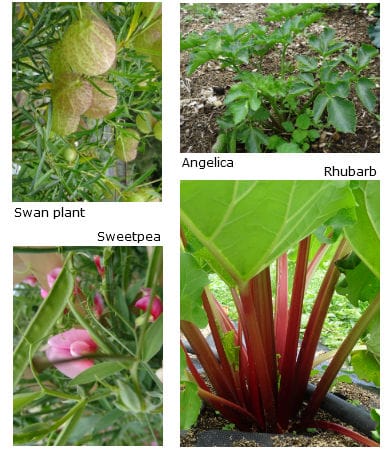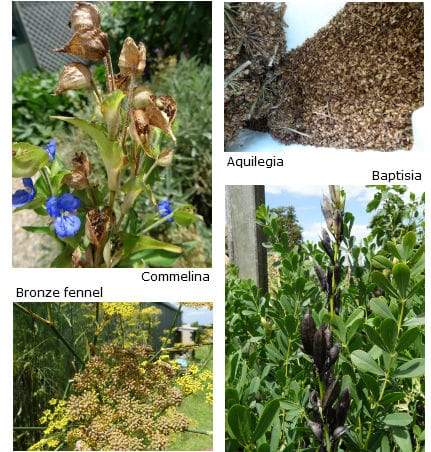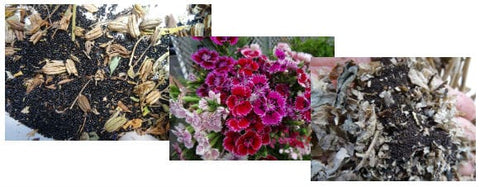Growing Your own Harvest

We are asked on a regular basis from where do we source our seed. Growing and harvesting over a thousand varieties of seed would be a huge investment in land, machinery and staff so we grow a little in various local gardens and purchase by far the majority of our seed from companies in Italy, USA and Holland.
I decided to go for a wonder around Gerard and Jude's gardens to see what they were growing for our seed harvest this season and thought I would share my discoveries with you.
Jude's garden:
Shiny Leaf Angelica
Rhubarb
Chilli Padron
Black capsicum
Red flower broad bean
Runner bean
Sweetpea rosea
Aquilegia
Swan plant
Nicotiana Sylvestris
Celosia lime

Gerard's garden:
Mina lobata
Lily regale
Angelica
Commelina
Baptisa Alba
Tweedia
Swan plant
Aquilegia
Poppy

One of the main reasons for growing to harvest the seed ourselves is that from time to time we have difficulties sourcing some varieties and we want to ensure we are able to keep them in the catalogue. Other varieties are grown and then keep cropping every year so we continue to harvest them.
Once the seed is ready to be harvested, the flowers or vegetables are picked and brought in for processing by hand. We all take turns to do this and in the past few years I have cut, plucked and scooped seed from Gem Squash, Tamarillo, Passionfruit, Chillies, Caigua and Swan Plant. Needless to say, the odd spoonful of flesh doesn't make it into the bucket, particularly when it's Passionfruit.

Depending on the nature of the vegetable, fruit or flower, there may be pulp to deal with or dry plant matter. The next step is to wash away all pulp and then dry the seed, or pluck the seed from dried pods and sift and re-sift until all the chaff has been eliminated. Sometimes there is a final step of picking out the smaller bits from the seed with tweezers, a time-consuming exercise but it's always satisfying to pack away nice fresh clean seed.
A story that we like to tell is from a couple of years ago. Gerard decided to add the hottest chilli to our range and grew Bhut Jolokia chillies. For those of you in the know, at the time they were the hottest chilli available, but another one has since passed it on the Scoville (level of heat) scale! We were warned to be very careful when brushing past the plants in the garden as the residue from the plant burns. It was an interesting exercise that proved that the application of yoghurt when chilli residue is burning you, absolutely works. The chillies were duly harvested and the first day Gerard was cutting them and scooping out the seed, it must have created a lot of residue in the air because suddenly we were all coughing. I went out to drop a file on the bench where he had been working and suddenly my eyes started streaming, nose running and I couldn't stop coughing. Gerard appeared down the corridor with the same affliction so we both stood at the sink eating Caigua which he was also processing at the time. Rules have since been put in place about where the Bhut Jolokia chillies are processed!
Don't let this story put you off having a go at harvesting your own seed. It's a very therapeutic thing to do, especially saving seed from heirloom varieties, knowing that you are doing your part for keeping these oldies but goodies well and truly alive.


























































